Please feel free to correct me if I am wrong. In JVM heap, there are two generations, old and young. When doing full GC, in old generation, there are heavy operations like compact spaces and fixing the hole, which will make JVM hang. And I find in young generation, a light weighted GC is applied, and there are another area called Eden involved in young generation from my search results. However, after search a lot of documents, I still have two confusions about GC in young generation,
- In young generation, it seems GC does not work in the way which old generation GC works (i.e. old generation GC compact and fixing the hole)? If so, how did GC in young generation works?
- What is Eden space and how this space is utilized in young generation? Appreciate if any document for a newbie could be recommended.
